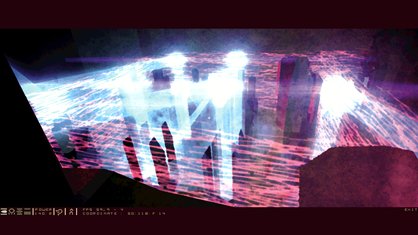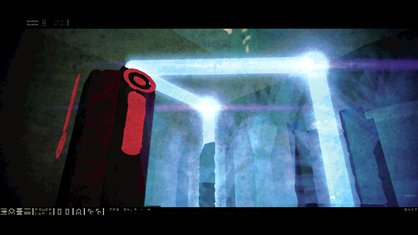GamesRadar+ Verdict
Pros
- +
The world is astounding
- +
Cooperative base-building
- +
Totally unique in the MMO genre
Cons
- -
Hard to feel invested
- -
Enemies spawn in hundreds and crash the server
- -
Not enough people playing
Why you can trust GamesRadar+
Love offers a choice of five fully traversable online worlds, each capable of serving 500 people. These vast globes are decorated with misty plains, towering cliffs, sandy beaches and roaring oceans. Hordes of AI quietly gather and expand over ruined player settlements. We’ve never seen more than six people online.

In Love, your central monolith projects a perimeter. Inside it, you can sculpt the land, place tools and lay power lines. By bunny-hopping into the wilderness, nosing around the majestic crags and stunning glacial vistas, you discover tools, bring them back, plant them near the monolith and then everyone can use them. Find a Hyperblaster token and your settlement can upgrade its guns. Snag a radio and you can all chat with each other during lonely hunts. Each time you return, diligent base-building players have made the place a little more like home. Just make sure you ask them where they want the new tokens.
There are dozens of tools, weapons and beautification tokens to be found, but to get most of them you’ll need to do some killing. The best tokens are in the keeping of the AI. Each enemy AI tribe has a unique architectural style and appearance, and even while you’re working away with your pals, they’re industriously fashioning your doom. The red guys build underground, and each of their warrens guards a red weapon token. Grab it and the place starts to collapse. Bring it back and we can all have rockets for dinner. Return empty-handed, leave their base functional, or spend too long fiddling with your base and they’ll bring the fight to you.

Skirmishes with enemies are a pleasing throwback to early id Software shooters such as Quake. Strafe around, jump a little and avoid their green slugs, and you can take them out in a few shots. Some shoot rockets, some hurl grenades and they’re all gunning for your buildings. If the base is undefended, they’ll destroy your tokens (removing the tools from your hotbar as they do), mess up your walls and bust your monolith, disbanding the settlement. Eventually, someone will find a monolith token, plant it and sooner or later everyone will spawn there to start the process all over again.
We’ve woken up to a freshly planted monolith, gone for lunch as the rest of the gang finished the bunker, returned after dinner to marvel at the network of power-beams threading our battlements, only to stay up till 3am defending it from relentless AI. Our windmills fell, our map room was stormed, our turrets shelled and our monolith broken.
Love is astounding. The world is rendered in impressionist dabs of light. Players perch with flowing dreadlocks as mantis-like enemies build impossible stairways to the very lip of their battlements. But despite the persistent world, settlements don’t last longer than a day or two, so it’s hard to feel invested. Enemies clip through walls or spawn in hundreds only to crash the server.

There’s hardly anyone playing in a game designed for a thousand people. There are bugs, weird design choices and oddities that will try to convince you to put your monthly subscription money down. And maybe you should. Our time has been interesting - eye-opening even - but we’re not itching to get back to that harsh, bug-ridden place. We say try it for a month and then see. It’s worth that much of your time, at least.
Apr 21, 2010
More info
| Genre | Strategy |
| Description | There’s hardly anyone playing in a game designed for a thousand people. There are bugs, weird design choices and oddities that will try to convince you to put your monthly subscription money down. And maybe you should. Our time has been interesting - eye-opening even - but we’re not itching to get back to that harsh, bug-ridden place. We say try it for a month and then see. It’s worth that much of your time, at least. |
| Platform | "PC" |
| Release date | 1 January 1970 (US), 1 January 1970 (UK) |



